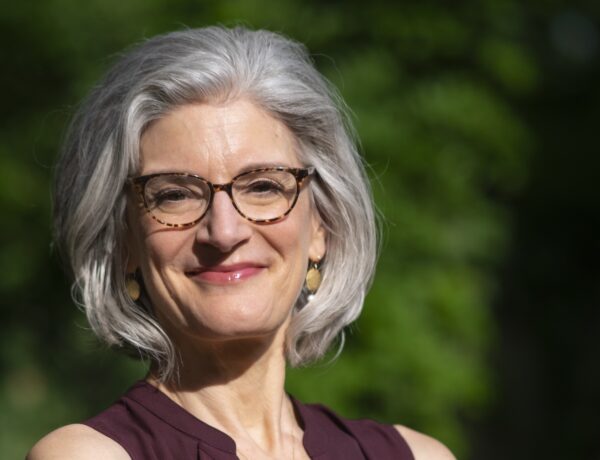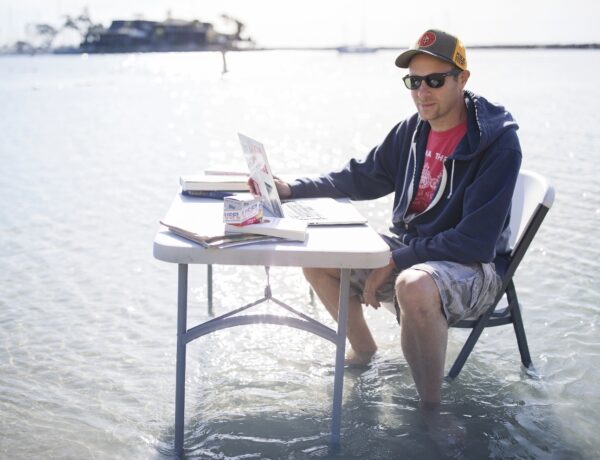Cleo Qian is a fiction writer and poet from California. She received her MFA from NYU. Her work has appeared in over 20 outlets; was a winner of the Zoetrope: All Story Short Fiction Competition; has been nominated for the Pushcart Prize, twice longlisted for the DISQUIET Prize, and supported by Sundress Academy for the Arts.
By day, she works at a nonprofit and reads self-help articles on how to be happy. She is a member of the poetry and performance collective Egocircus. Her other interests, past and present, have included video poetry, clothes and identity expression, melodramas, horror movies, martial arts, and the handmade Internet culture of Web 1.0.
Her debut short story collection, Let’s Go Let’s Go Let’s Go, is forthcoming from Tin House in 2023.
Photo credit: Casper Yen
Looking for inspiration to help you achieve your writing goals? Subscribe to our newsletter for exclusive insights into the routines, habits, and techniques of some of the most celebrated authors in history.
Hi Cleo, welcome to Famous Writing Routines, great to have you here with us today! Your book, Let’s Go Let’s Go Let’s Go, is described as exploring the lives of alienated, technology-mediated Asian and Asian American women. What inspired you to write about these characters and their experiences?
I am an Asian woman who feels alienated and whose life is mediated by technology, sometimes by choice. These stories took shape over much of my twenties, throughout which I have been very mobile. I lived in Japan, where I moved around a lot.
Then I moved to New York and moved around even more. I’ve lived in 7 apartments in Manhattan and Brooklyn. I’ve had a lot of different jobs and roommates and met a lot of different types of people. My life and sense of identity were unstable and volatile. I relied on technology and the Internet for many things – to meet people, to soothe loneliness, to understand myself and also change myself.
When I read the news, scroll through social media, and look at my generation, I feel many of us are caught in exhausted cycles of hope and alienation. I have mainly lived in urban cities, where this alienation is perhaps more concentrated. These struggles are correlated with attitudinal changes towards communications technology and the Internet over the decades, and how we have looked to them as hope, balm, addiction, and disease.
In the book, you touch on themes of dutiful, docile stereotypes, compulsions, unrequited longing, and queer desire. Can you expand on these themes and what message you hope readers take away from the book?
I am not sure if there is a message to be taken away from the book, just as I am not sure that the role of art should be to give such a message. I struggled against and resented stereotypes I felt forced on me. For the others, I channeled emotions that I saw in others or recognized in myself. I tried to depict these interior landscapes with the accuracy and lack of moralization that fiction can provide.
What was the biggest challenge you faced in writing Let’s Go Let’s Go Let’s Go and how did you overcome it?
I was very tired. I struggled a lot with jobs, with loneliness, with relationships, with grief, health, and various personal traumas I never had time to take care of. My exhaustion is not unique, but I was exhausted.
I did not set out to write a short story collection. I was writing a novel alongside the stories of Let’s Go Let’s Go Let’s Go – in New York, everyone says you need a novel to be published. I thought I’d finish the novel first, but instead I finished this collection. I sent it to agents, who asked for a novel instead. When I finished the first draft of the novel, I realized I didn’t like it. It had taken five years to write the draft – I threw it away. I revised the short story collection and sent it to more agents – they still rejected it. And it’s easy to compare yourself – many of my peers were getting big awards and publishing books. I almost gave up on writing then. My life was in a really bad place. It wasn’t just because of writing. But writing contributed to a lot of my grief.
If I was in a lot of pain, I used to think that I couldn’t die yet because I hadn’t held my first book in my hands. It was a dream that kept me alive through hard times. I had to grapple with what my life would look like, and what it might mean, if I never got to fulfill that dream. In a way, writing had been my religion, what I oriented my whole worldview around, and I was losing it. I traveled and worked on other hobbies. I stopped writing for a while. I distanced myself from writer friends. I read a lot of poetry.
I submitted Let’s Go Let’s Go Let’s Go to an open call for unagented manuscripts at Tin House in a last-ditch effort because part of me still believed in it. My editor selected it from the slush pile. It sounds like one of those artistic stories of perseverance beyond rejection, but I feel I, and other artists who go through the same, should not have to hope for such a narrative in the first place.
Your work has appeared in over 20 outlets and you have received recognition for your writing, including the Zoetrope: All Story Short Fiction Competition, Pushcart Prize nominations, and support from the Sundress Academy for the Arts. How do you think this type of recognition has impacted on your writing career overall?
When you frame it like that, it seems like a lot of recognition. But this belies how much rejection I have faced in proportion. I have a spreadsheet – I have probably been receiving a hundred rejections a year for nearly a decade. I have complicated feelings about the economy of recognition.
Do you struggle to stay focused while writing? You’re not alone! That’s why Famous Writing Routines recommends Freedom – the ultimate app and website blocker for Mac, Windows, Android, iOS, and Chrome. With over 2.5 million users, Freedom helps writers stay on task and avoid distractions. Get started for free today and reclaim your productivity!
As a member of the poetry and performance collective, Egocircus, what role does performance play in your creative process?
Patti Smith has a line in Just Kids: “What it had to do with art I wasn’t certain.” Being around the members of Egocircus has allowed me to expand my sense of what writing and art-making is, and how different forms of play and creativity can feed into one another. With Egocircus, I started making stuff just for them, just for friends, for fun, like video poetry, which I wasn’t trying to find a public audience for.
How do you balance your passion for writing with your work at a nonprofit and your other interests, such as video poetry and martial arts?
I work at a nonprofit to earn my living, and to do so in a way that doesn’t feel completely immoral and extractive from the human community and from the environment. I did Shinkyokushin karate for two years in Japan, and it was the first sport I loved and made me feel safer in my body. I couldn’t find a good dojo once I moved to New York. Having other hobbies saved me during the times when writing was too painful, but I also put writing ahead of other interests. I frequently juggle priorities and think about the lives I didn’t live.
Can you tell us about your writing routine? What does a typical day look like for you?
I don’t have much of a routine. I wish I was better at them. But I am always thinking a lot.
If you could have a conversation with any author throughout history about their writing routine and creative process, who would that person be?
I am curious about Han Kang. I have only read her books in translation but really admire her work.
I’d love to know about the books you’re reading at the moment. What have been some of your favorite recent reads?
My tastes are quite variable, but off the top of my head: Victoria Chang’s The Trees Witness Everything; Margarita Liberaki’s Three Summers; Mariana Enriquez’s The Dangers of Smoking in Bed; Izumi Suzuki’s Terminal Boredom. I felt a lot of kinship with Catherine Liu’s Oriental Girls Desire Romance. Sheila Heti’s A-Z diary which ran in the New York Times felt healing. Ottessa Moshfegh’s Lapvona was very weird and stuck in my mind.
A friend and I were recently discussing Shirley Hazzard’s The Transit of Venus, which I read a few years ago but liked for its layers of depth in contrast to modern life. I am currently in a period where I want to read slower books. I also love reading works by friends, which is always humbling to me, such as The Lookback Window by Kyle Dillon Hertz (forthcoming this year). I have too many book recommendations. It’s hard to stop me once I get started.
What does your current writing workspace look like?
I’m always living in borrowed spaces and am currently subletting from a roommate who furnished the apartment very beautifully. Here is a photo of the kitchen island where I like to work because of the sun.

Affiliate disclaimer: Some links on this website are affiliate links. We may earn a small commission if you make a purchase through these links, but only promote products we truly believe in. We disclose affiliate links and give honest reviews.



No Comments